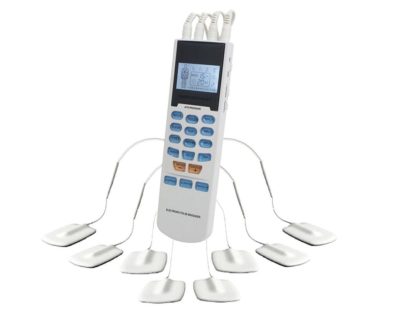Headaches and TMJ Pain
 It is estimated that nearly 20 million people in the United States have TMJ related headaches. This is a huge number of people! Many of these people don’t even know their headaches are TMJ related. Medical doctors generally don’t know much about the TMJ and even many dentists struggle to effectively treat TMJ pain because it isn’t well understood and can present in many different ways.
It is estimated that nearly 20 million people in the United States have TMJ related headaches. This is a huge number of people! Many of these people don’t even know their headaches are TMJ related. Medical doctors generally don’t know much about the TMJ and even many dentists struggle to effectively treat TMJ pain because it isn’t well understood and can present in many different ways.
Not all headaches are related to TMJ problems but enough are related that I believe anyone with chronic headaches should have a TMJ evaluation to rule it out before proceeding with any type of other treatment.
First let’s take a look at what types of headaches are commonly associated with or mistaken for TMJ pain.
- Tension headaches – These are the most common types of headaches. They present as a dull headache centered on the forehead, temple, or back of your neck. They aren’t terribly well understood but are thought to be a result of muscle tension, stress, tiredness, and many other factors.
- Sinus headaches – These are related to pressure in your sinuses. These can cause pain right over your cheekbones, between your eyes and upper nose, and also the lower middle portion of your forehead depending on which sinuses are involved.
- Cluster headaches – These are a pattern of severe headaches that cluster together in one time period. The headache is usually on one side of your head, causes severe pain, and last anywhere from 30 minutes to several hours. You’ll often have 1-4 headaches in a cluster. This is the one type of headache that affects more men than women.
- Migraine headaches – This is another type of severe headache that presents with severe pain in your temple area and front and back of your head on one side. They cause severe pain, light sensitivity, nausea, and sometimes vomiting. They usually are preceded by an “aura”, which is a specific feeling or visual sense that comes before the migraine starts. They usually last much longer than other headaches (many hours).
TMJ symptoms are extremely varied. They can include any of the following…
- Clicking and popping of the jaw joint
- Grating of the joint
- Difficulty opening or closing
- Limited opening
- Muscle pain around the jaw and TMJ
- Generalized facial pain
- Ear-ache
- Headaches ranging from dull aches to severe migraine types
Problems with the TMJ manifest in any of the different patterns that headaches come in. This is why it is so difficult to be sure exactly what is causing them.
Women are the most likely to suffer from TMJ related headaches and most start having them in early to middle adulthood. They also seek treatment for TMJ pain at a much higher rate than men. This is thought to be a result of changing hormone levels.
So what do you do if you are concerned that your headaches might TMJ related?
First, get checked out by your physician. Chronic headaches can be a sign of certain types of serious health conditions.
If they rule out anything major, start working on getting your TMJ healthy again. This includes…
- TMJ exercises
- TMJ splints
- Working on your posture
- Avoid chewing gum or other hard foods
- Warm compresses
You can see a TMJ specialist for treatment or you can try some at home methods. I tend to believe that most people should try at home treatment first before resorting to expensive professional treatment. Studies have shown that most TMJ pain can be managed with inexpensive, reversible, at home remedies. I have created very specific guides that cover everything from at home TMJ splints to exercises and postures to practice. If you’d like more information about these guides you can go here.



